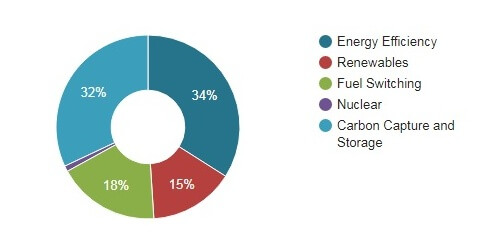Energy Efficiency simply means using less energy to perform the same task - that is, eliminating energy waste. Energy efficiency brings a variety of benefits like: lowering our costs on a household and the whole economy, reducing demand for energy imports and reducing greenhouse gas emissions. While renewable energy technologies also help accomplish these objectives, improving energy efficiency is the cheapest - and often the most immediate - way to reduce the use of fossil fuels. There are enormous opportunities for efficiency improvements in every sector of the economy, whether it is buildings, transportation, industry, or energy supply. According to the International Energy Agency (2017), energy efficiency technologies will contribute substantially towards achieving carbon neutrality by 2060.

The likely contribution to global CO2 reduction from energy efficiency technologies is 34%, compared to the 15% contribution from renewables. Recent progress in certain clean energy areas is promising, but many technologies still need a strong push to achieve their full potential and deliver a sustainable energy future.
Despite these achievements, 1.2 billion people around the world lack access to electricity, while another 2.7 billion people lack access to clean energy for cooking. The energy sector ranks as the largest source of GHG emissions today, around two-thirds of global total. It is also the largest source of air pollution, linked to 6.5 million premature deaths per year. Therefore, achieving carbon neutrality by 2060 would require unprecedented policy initiatives and investments in efficient technologies. Each country should define its own transition path towards a sustainable energy future, and Sri Lanka has rightly chosen a programme with focused attention on ten promising technology interventions to realise its energy efficiency goals.
Yes, there are three predicaments.
Firstly, it is the demographic dynamics. The world population growth is projected to reach 8.5 billion by 2030. Also, there will be 41 megacities in the world by 2030, where a single megacity will harbour a population of more than 10 million people. These have led to a considerable increase in energy use.
Secondly, energy resources are abundant, but unevenly distributed. 70% of global oil and gas reserves are in just a few countries. This, along with fluctuating energy prices has led to the increased demand in energy efficiency.
Thirdly, climate change has increased the demand for clean energy. According to the International Energy Agency, energy savings in the electricity sector alone could reduce carbon dioxide (CO2) emissions by 7.3 Gigatons (Gt) in 2050 relative to the business as usual (BAU) scenario, representing 17% of total anthropogenic emissions reduction.
Sri Lanka Sustainable Energy Authority
No.80, Sir Earnest de Silva Mawatha
Colombo 07
Sri Lanka.

